Last week, we looked at five different embroidered versions of the same Adoration of the Magi design. By changing materials and embroidery techniques, these late 15th and early 16th century embroideries look quite different from each other. The scene was part of four chasubles and a loose chasuble cross. But what about the other scenes complementing the main Adoration of the Magi scene? Where they also identical on all five pieces? Let’s find out what they can tell us about the design process of late medieval embroidered vestments.
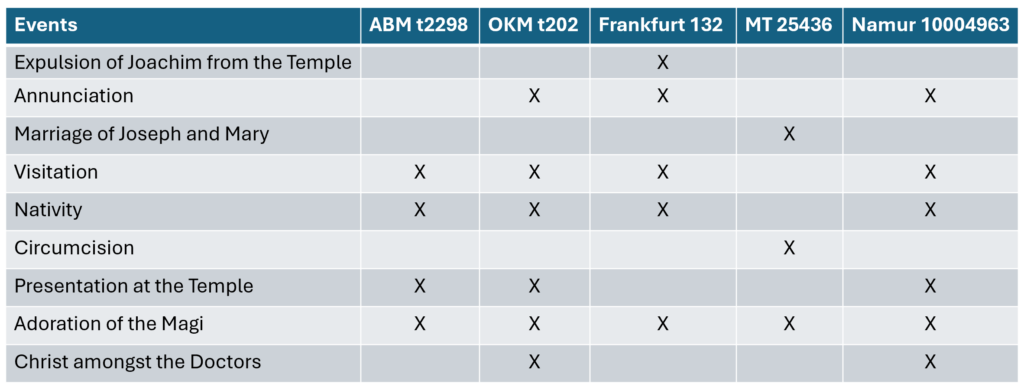
Above is a list of the events in the life of Jesus that are depicted on the five late medieval embroidered vestments. It becomes clear that some scenes were more popular than others. Bear in mind that none of these pieces are in their original configuration. They were all cut down to the newer, shorter model when fashion changed. This probably means that all of them miss at least two scenes. A partial scene on the chasuble from Frankfurt is interpreted in the literature as Joachim and Anna (parents of Mary) meeting at the Golden Gate. However, I think it is more likely that this is the Visitation.
Just like some modern people, ancient people wanted to know everything there was to learn about their heroes. As the official bible is rather tight-lipped about many ordinary aspects of the lives of the Holy Family, apocryphal texts filled that void. For instance, Mary needed more background. The story of her parents and her miraculous conception can be found in the Gospel of James. Although this gospel did not make it into the official bible, its stories were widely known in the medieval period. The scene of her father Joachim being expelled from the temple for being childless (when Mary was finally born, he was an old man) is included on the chasuble from Frankfurt.
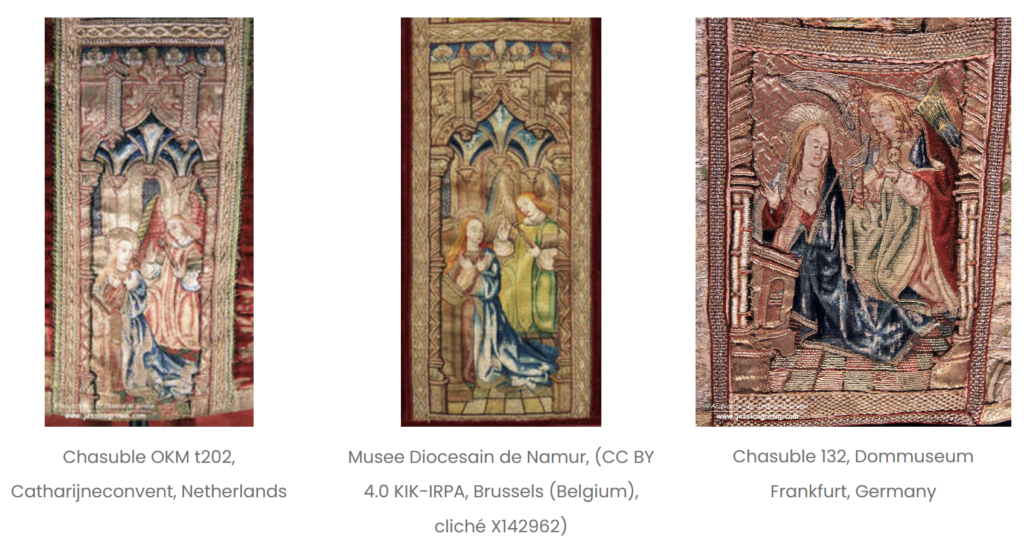
As we compare the scenes of the late medieval embroidered vestments we have multiples for, we both note ‘twins’ and a striking diversity. There are two different design sources for the Annunciation.
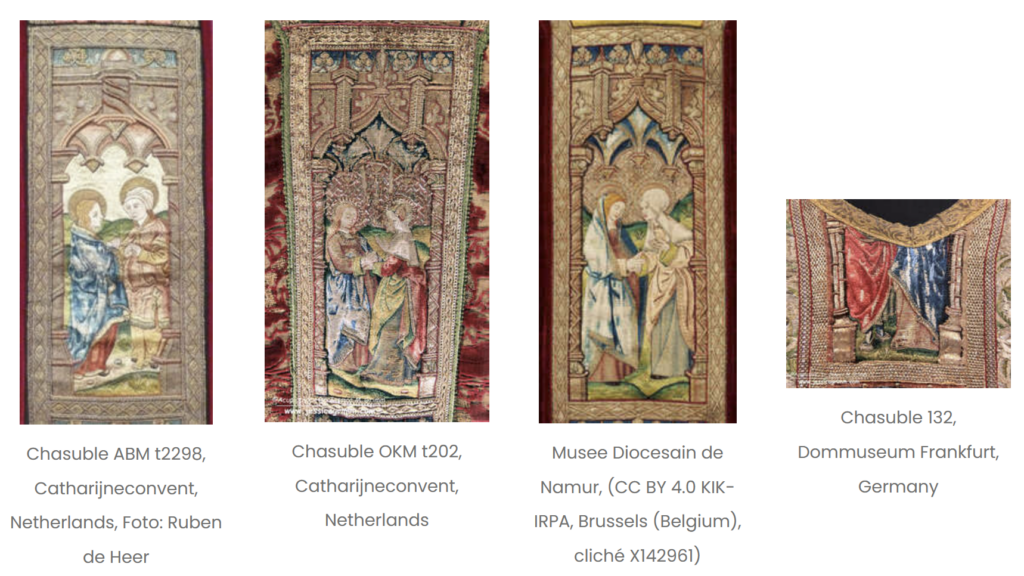
There are four different design sources for the Visitation.
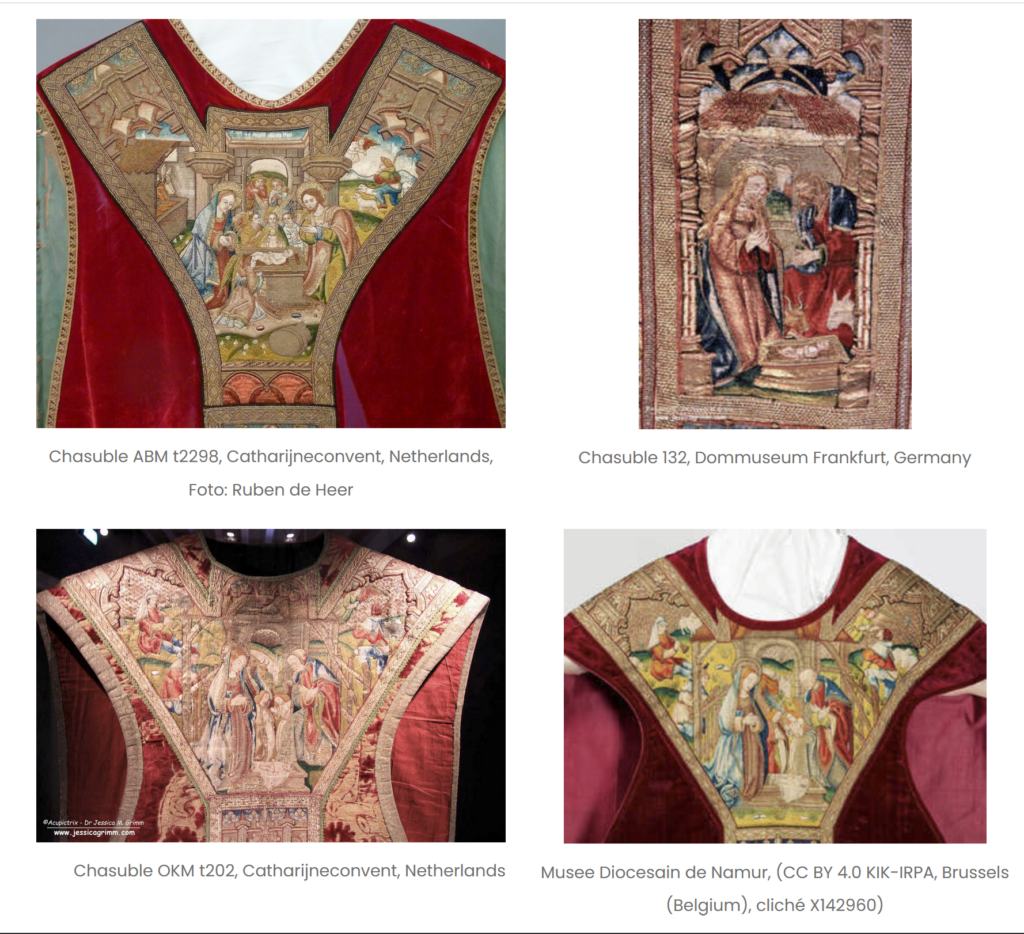
As the Nativity scene is another central embroidery on the two chasubles now kept in the Catharijneconvent, one would expect that at least these two share the same embroidery design. However, they don’t. Instead, one of the chasubles from the Catharijneconvent is a twin again with the chasuble from Namur. There are three different embroidery design drawings at the base of the Nativity scene on these late medieval embroidered vestments.
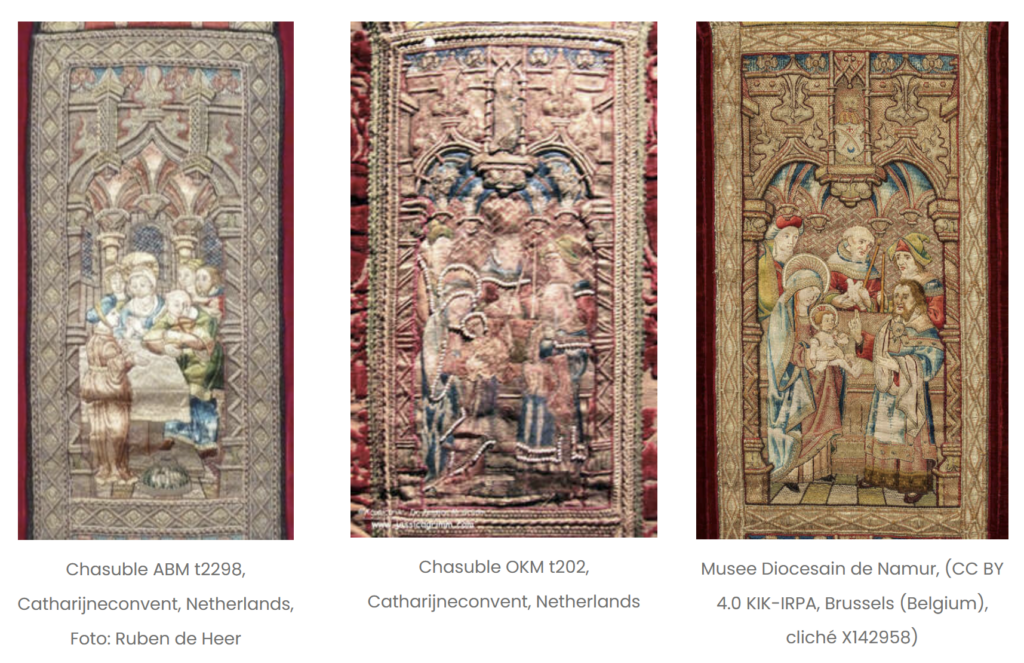
By now, it will probably not surprise you that the Presentation at the Temple scene has a twin and a completely different version amongst these late medieval embroidered vestments.
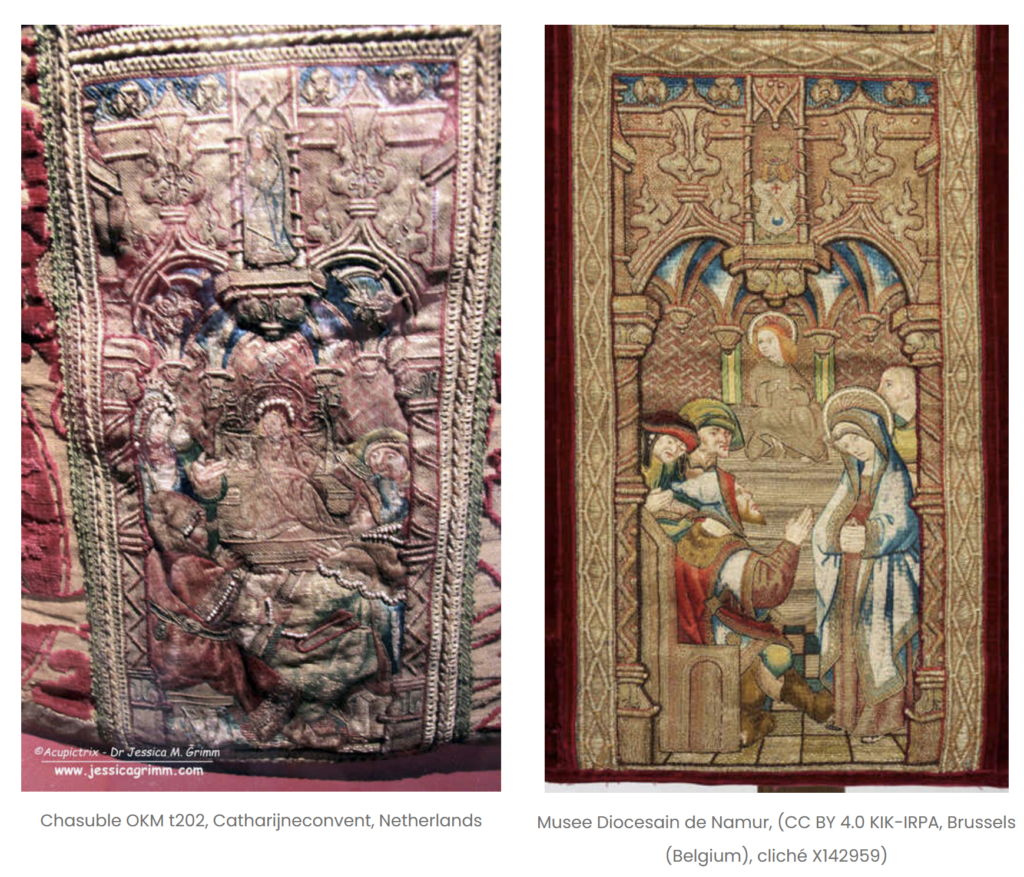
The two scenes of Christ amongst the Doctors have a different design source. Although one of the chasubles from the Catharijneconvent has several scenes that are identical to the ones on the chasuble from Namur, two scenes are different (this one and the Visitation).
What does it all mean? Supposedly, all five embroideries were made in Amsterdam (the online catalogue states that the one from Namur was made in the Duchy of Brabant; I doubt it) at around the same time. We have already seen that all five Adoration of the Magi scenes have the same embroidery design but very different embroidery techniques and materials. Combining this with the above evidence, I don’t think that any of these embroideries were made in the same workshop. What do you think?
Furthermore, how far did the design ‘template’ drawing of the Adoration of the Magi travel? Was it really only used by the embroiderers in Amsterdam? Why, then, do the other scenes use at least three different design template sources? Did the embroidery guild in Amsterdam have such an extensive library of designs? Knowing how many embroiderers worked in Amsterdam at the start of the 16th century would be helpful. Unfortunately, we don’t. We do have a guild regulation from the Amsterdam St Luke Guild from AD 1579, slightly after the creation of these embroideries and well after the Reformation kicked in, where the embroiderers are named together with the painters, glazers, sculptors, carpet makers and potters. There are clearly not enough or no longer enough embroiderers in Amsterdam to form their own guild. The St Luke guild undoubtedly had some excellent draftsmen amongst its members. But still. Is it possible that the Adoration of the Magi template drawing travelled between the guilds of different cities?
We know from historical sources that design drawings were ordered from painters and other talented draftsmen, either by the embroiderers themselves or by the client. The sources sometimes stipulate that the drawing needs to be returned to the maker. In that case, it would be easy for the maker to supply another guild with the same design. Thus, the design library was probably not housed by the embroidery guild but by individual draftsmen or the guild to which they belonged. Is it thus possible that these four renditions of the Adoration of the Magi were not all made in Amsterdam? Perhaps some were made in other towns near Amsterdam, such as Leiden, Alkmaar, Haarlem or Hoorn? What do you think?
Literature
Bodt, S. de, 1980. ‘Dan isser de Borduerwercker …`. Nederlands Kunsthistorisch Jaarboek 31 (1), 65–71.
Stolleis, K., 1992. Der Frankfurter Domschatz: Die Paramente: Liturgische Gewänder und Stickereien 14. bis 20. Jahrhundert. Waldemar Kramer, Frankfurt am Main.
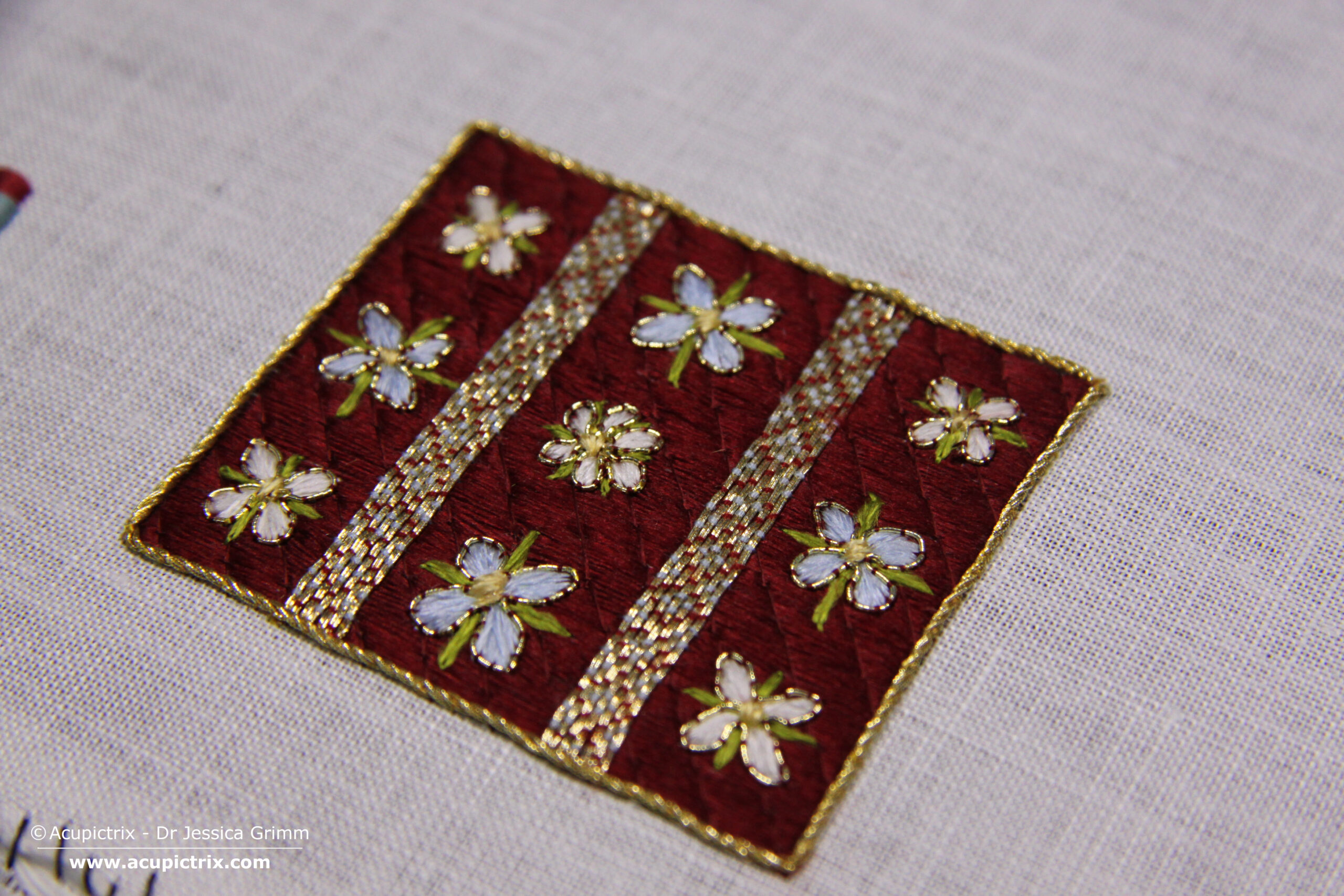
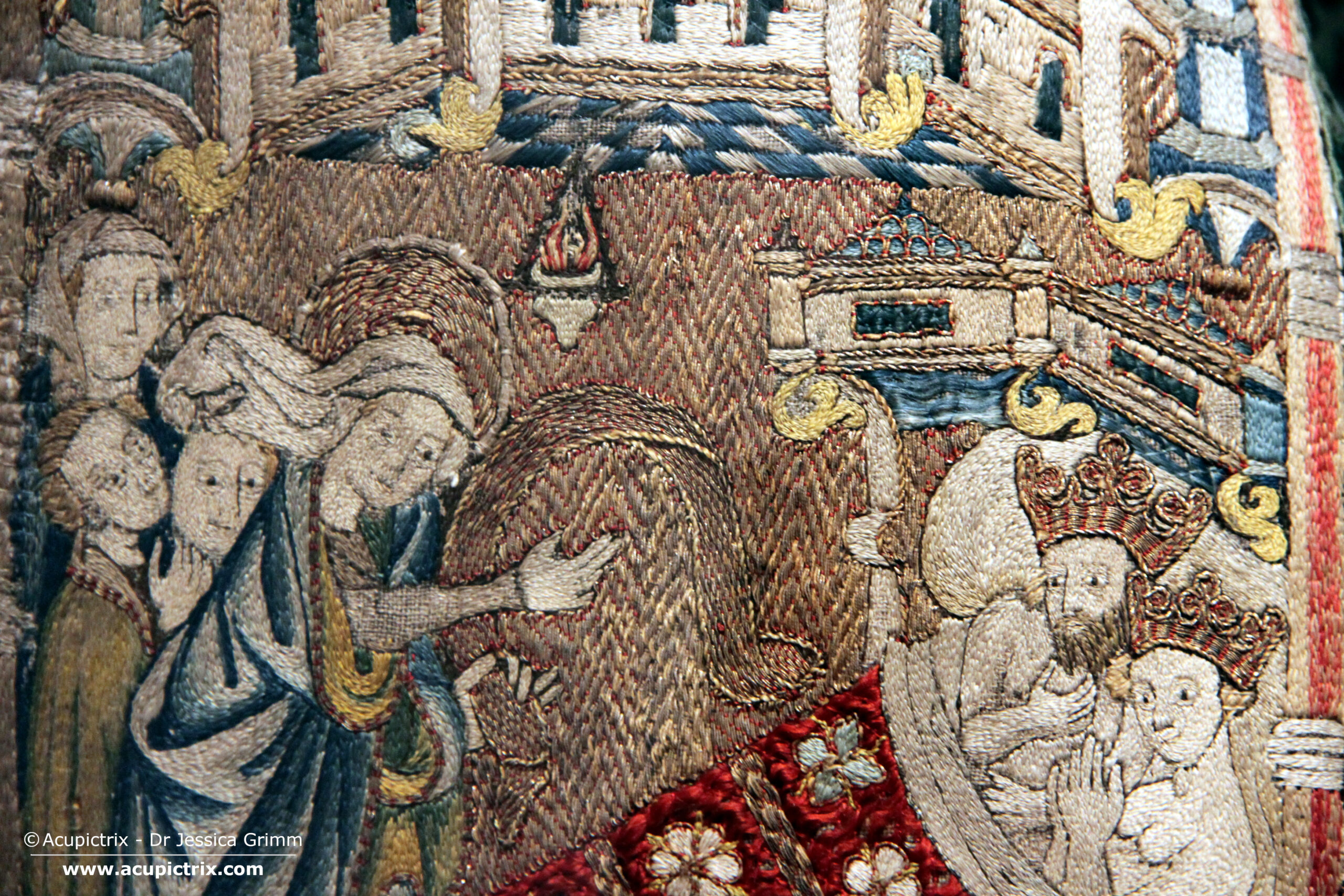
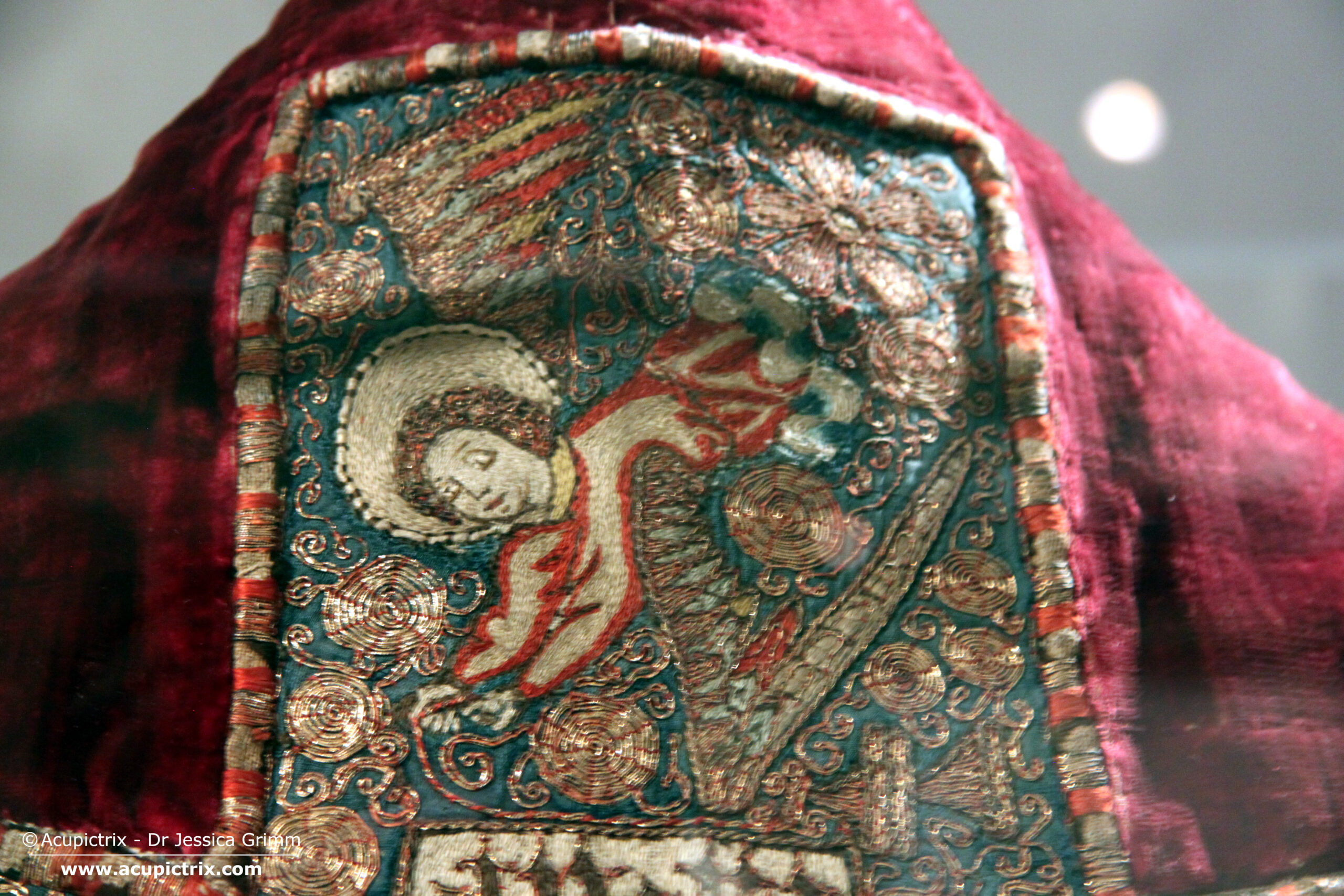
0 Comments